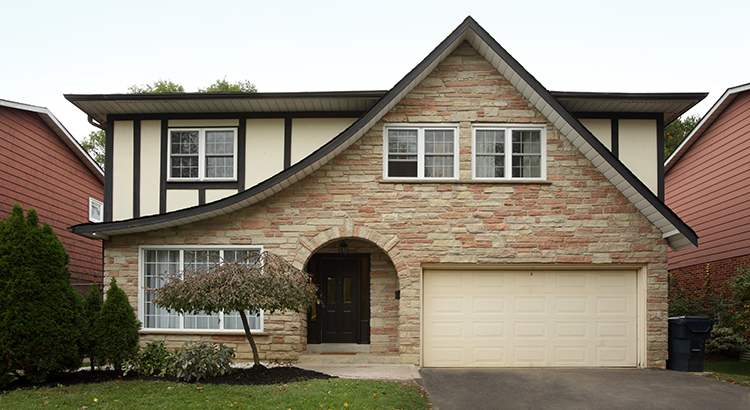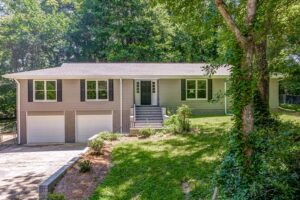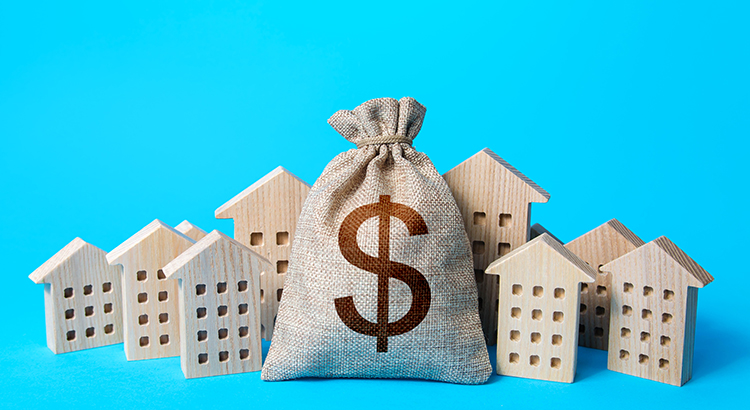The information in this article is intended to help active investors. Understanding risk in fix and flip projects will guide investors through the process of risk managements to protect capital and maximize profits.
Single-Family House Fix and Flipping Risks
Fixing and flipping single-family houses is risky. There is risk inherent in every single-family house renovation project. Other risks can unexpectedly become likely due to sudden changes in the housing market.
Understanding and managing risk will reduce the possibility of capital loss and increase the likelihood of reaching and even exceeding your profit goals.
Due Diligence
In residential real estate transactions, sellers will give buyers a due-diligence period. This can be any period agreed by both parties. 7 to 10 days is about normal, but it could be less time in a seller’s market. Sometimes an investor will offer a short due-diligence period to sweeten the offer in a competitive market.
Sometimes you can get the seller to agree to an extended due-diligence period which is often advantageous as an investor.
Here is a brief introduction to the work that should be performed during the due diligence period. For more details see 5 Due Diligence Tasks for SFH Rehab Projects.
During the due diligence period you should look at the following items.
Market Analysis
A market analysis during the due diligence period is a best practice to reduce risk of not overpaying. Many factors can impact the price of single-family houses so it’s important to perform a market analysis for every property.
A real estate broker will perform a comparative market analysis for the subject property. This analysis should factor in the school district, neighborhood, street address, adjacent properties, and any other relevant facts in addition to the floor plan and features of the house.
An accurate market analysis will reveal the price point for the property after it has been fully renovated. Both the re-sale price of the house and the repair costs will enable you to determine the maximum price to pay for a property to achieve your profit goal.
Property Condition
Failing to accurately assess the condition of a property can be one of the biggest risks for you as an active fix-and-flip single-family house investor. The risk is not in the property condition, but in the failure to understand the actual condition of the property.
Usually, distressed properties that need many repairs are the most profitable deals. Experienced investors know that properties in the worst condition imaginable have a high probability of significant returns.
Solving real-estate problems is where the money is made, but failure to have a complete understanding of the problems leads to significant, unknown risks that could not only kill profits but also result in loss of capital.
Knowing the full and exact property condition is imperative in single-family house renovation projects prior to committing funds to make the purchase. This knowledge will enable you to accurately calculate the repair costs for the project. The problems discovered in the property may be good ammunition to go back to the seller to negotiate a better price.
Repair Costs
The condition of a property will determine the costs to get it in the projected after-repair condition. High costs are not the risk. The risk is not getting accurate repair costs for each line item in the scope of work. You have to get this right.
Inaccurate estimates of repair costs are big profit killers. It’s easy to underestimate the cost of material and labor of making repairs in any type of economy. It is even harder to get accurate numbers during times of economic instability.
Inflation, supply chain disruptions, and labor shortages are all significant challenges to the repair cost estimate process. Active house renovation investors, who consistently do deals in every market condition, have the experience and knowledge to avoid the pitfall of failing to get the numbers right.
Neighbors and Adjacent Properties
Location, location, location. The value of every parcel of real estate is determined in large part by its location. Of particular concern for single family houses is how the house is situated on the parcel of land in relation to adjacent properties and neighbors.
A house in a great location can be devalued by neighbors who trash their own property or by plans to develop an adjacent parcel into an undesirable use such as a landfill or a gas station. The flood plain, tornado/hurricane risks, radon gas, existing or planned 5G installations, noise pollution, and dozens of other factors can also bring down a property’s value, and must be accounted for.
During the due diligence period, you should find out what’s going on in the neighborhood and be on the alert for anything that could possibly affect the subject property value.
Easements and Encroachments
Easements are permitted uses of the subject property by neighbors (such as a driveway across a parcel of land) or utility companies with electric, water, communication, or gas lines or the right to cross the property to service their lines.
Encroachments are things like a neighbor’s fence or shed that are unlawfully on your property.
Discovering easements during due diligence can be accomplished by the seller disclosing the easements and through the title search (done by the closing attorney or title company). Single-family houses often do have unobtrusive easements, especially utility easements, that are common enough to not impact the value. However, easements that are in constant use by a neighbor, such as a driveway, can devalue a property when compared to an otherwise similar property without a driveway easement.
Encroachments do devalue a property and solving the problem can be costly if the offending neighbor refuses to address the issue. But sometimes encroachments are so minor, such as a single fence post taking up 1 square foot of land, that it might be best to let it be.
Such decisions are important and the experienced investor, in consultation with other experts (attorney, surveyor, or agent), will need to understand how any given easement or encroachment affects the property value. Of course, any decisions or plan of action should be made during the due-diligence period. The last thing you want to do is discover easements and encroachments when you are reselling the property and having to reduce profits and even risk the loss of capital because of significant devaluation.
Title and Ownership
This risk is all about making sure the seller is the actual owner who has the right to sell the property to you.
The closing attorney or title company will have a title search performed on the property.
The important thing to keep in mind as an investor is to have the title search completed early in the due diligence period. This should happen prior to incurring other, more costly, due diligence expenses only to find out someone else also has an ownership interest in the property who does not want to sell or does not want to sell at a price that makes sense for you as an investor.
In addition to a title search, it’s important to get a title insurance policy that covers you as the new owner. If you get an investment loan to make the purchase, the lender will require that you pay for title insurance that covers the lender. You will need to tell the attorney or title company that you want to purchase title insurance coverage for you as the owner of the property.
Hold Time and Exit Strategies
During the holding period, which includes both the time that the repairs and upgrades are being made and the marketing time of the renovated house, there are potential risks that you should manage.
Insurance
The type of insurance policy that you need as an active investor doing single family house deals is different than the typical homeowner policy.
An insurance broker can provide advice about the insurance needed on a single-family house fix-and-flip project. At a minimum, coverage should include liability and loss due to fire and storms, for example (“hazard insurance”).
The contractors that are hired to perform work on the property should have their own insurance coverage, but you want to be covered for any lapse in their coverage or for accidents that can occur on the property during renovations after hours (such as kids getting injured while trespassing and skateboarding up and down the driveway).
If you are planning to hold the property as a rental, be sure to tell your insurance agent every time the property is vacant between tenants. Vacant property coverage is different (and more expensive) than coverage for an occupied home.
You should have quotes for the cost of insurance to cover you while you are holding the property prior to reselling. Keep in mind that if your holding time gets extended, you may need to renew or make changes to the policy. Keeping the insurance policy active and up-to-date is imperative so that you don’t have the risk of capital loss for anything that would otherwise be covered.
Market Changes
The market could always change while you are in the middle of a renovation project so it’s important to stay informed about potential risks that come with sudden changes.
The market analysis completed during the due diligence period is valuable information that may help you to make good decisions when there is a significant change in market conditions. You may have to make sudden changes to the renovation plans (maybe scaling back some expensive cosmetic upgrades for example) or use another pre-planned exit strategy to secure profits or prevent capital loss.
Multiple Exit Strategies
While the exit strategy is reselling the property after value is added, market conditions can change while the property is being renovated.
A natural secondary exit strategy for a single-family house fix and flip is turning it into a rental property for cash flow. The house can then be re-sold at a future date when market conditions are more advantageous to recover capital and even secure profits
Conclusion
The risks associated with fixing and flipping single-family houses are significant. You shouldn’t rush into the home renovation business without fully understanding the risks and having the ability to manage each type of risk.
Metro Atlanta Houses
Alpha Dog Capital has been investing in the Atlanta housing market since 2010 when home prices were at the bottom. We have learned to profit under every market condition. Our preferred strategy is fixing and flipping single-family houses for capital appreciation.
Book a Call
Visit our contact page to contact us or schedule a call with John Marion to learn more:
https://calendly.com/johnmarion/alpha-dog-capital-intro-call







